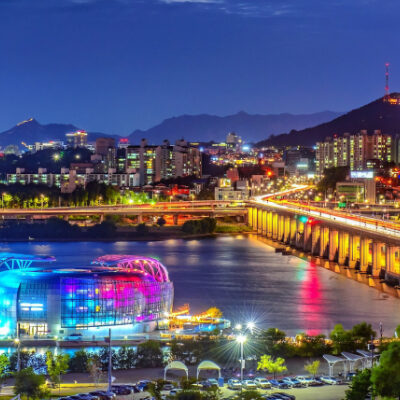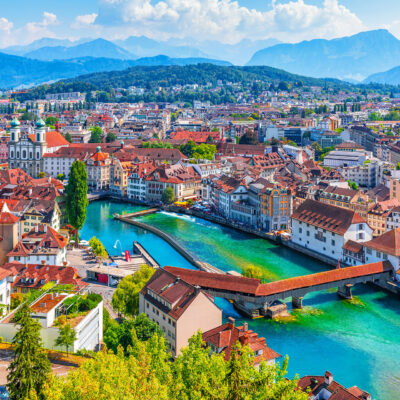You have probably heard about Niagara Falls at least once in your life. It is indeed among the tallest waterfall in the world, yet it is not the largest one. We will share with you many more, not less impressive, travel destinations where you can admire other biggest, tallest, and largest waterfalls as well!
Top 5 Biggest Waterfalls in the World
A waterfall is actually a body of water, most typically, a river, that falls over some rocky surface into a pool below it. Another title of the waterfall is the cascade. Sounds great, isn’t it? And it looks spectacular too, especially when some tall or big waterfalls emerge. Let’s delve into details about the hugest waterfalls on the Earth first.
Inga Falls
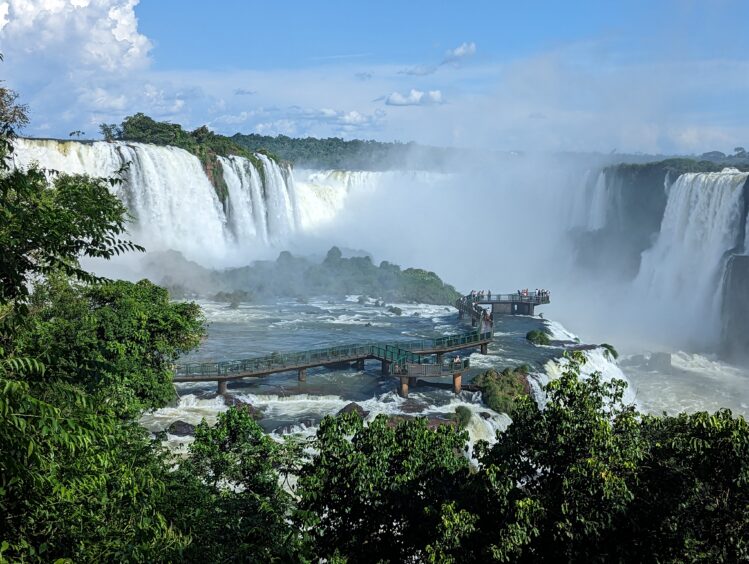
If you are wondering what the biggest waterfall in the world is, we suggest you draw attention to this one. Inga Falls is not a widely known, in fact. It is situated in the western part of the Democratic Republic of the Congo. The waterfall has a powerful and fast stream. Speaking precisely, the Congo River drops from the height of around 300 feet over the 9-mile course! The water source has a tremendous flow rate of 1,500,000 cubic feet every second!
That is the reason why it hosts hydroelectric facilities – two damps are actively operating in this place. Can you only imagine the power of the currents? It produces over 40,000 megawatts of electricity! That is why these hydroelectric dams are the largest power producers on Earth. Even more, the further exploration of the hydropower potential of the Inga Waterfall, nowadays, is continued.
Core features:
- Location: the Democratic Republic of the Congo
- Height: 300 feet
- Flow rate: 1,500,000 cubic feet/second
Livingstone Falls
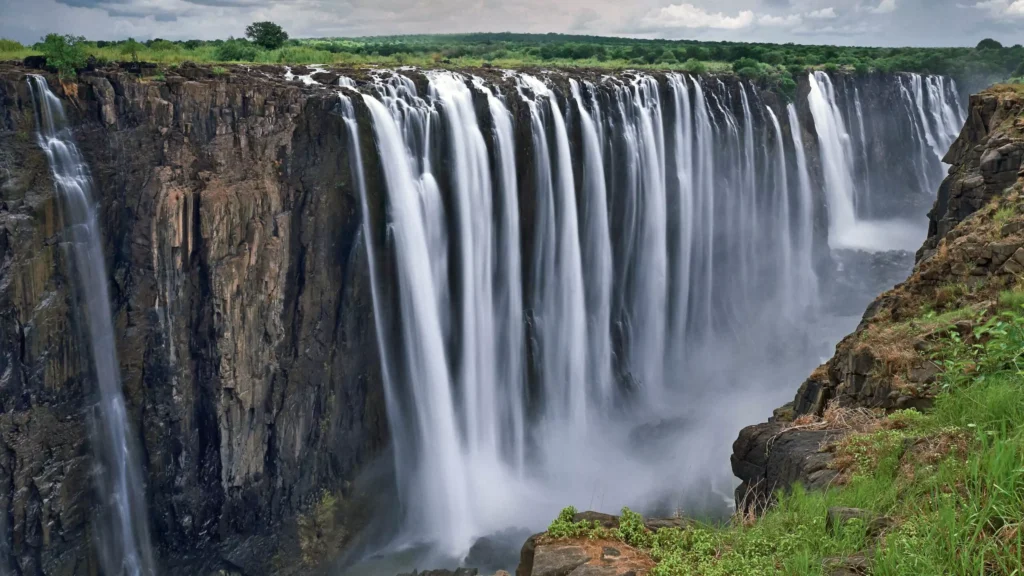
This is another astounding waterfall in the world. It has got its title after the famous British explorer David Livingstone. This waterfall is compound and is among the natural marvels of the Democratic Republic of the Congo. This cascade consists of a series of rapids dropping from the height of 900 feet in the lower course of the Congo River. This river, by the way, has the second-largest flow on the Earth. Only the Amazon River supersedes it! Notably, such powerful streams separate fish populations, encouraging new species to appear while being in close proximity to one another.
The Livingstone Falls has one interesting feature. The approximately 200-mile long waterfall has an extremely narrow channel which doesn’t exceed 1,000 feet! Despite this fact, the flow rate is impressive – around 1,500,000 cubic feet per second! That is the reason why the potential of this cascade is considered for power generation. The Inga hydroelectric scheme supposedly will be applied in this region as well.
Core features:
- Location: the Democratic Republic of the Congo
- Height: 900 feet
- Flow rate: 1,500,000 cubic feet/second
Boyoma Falls
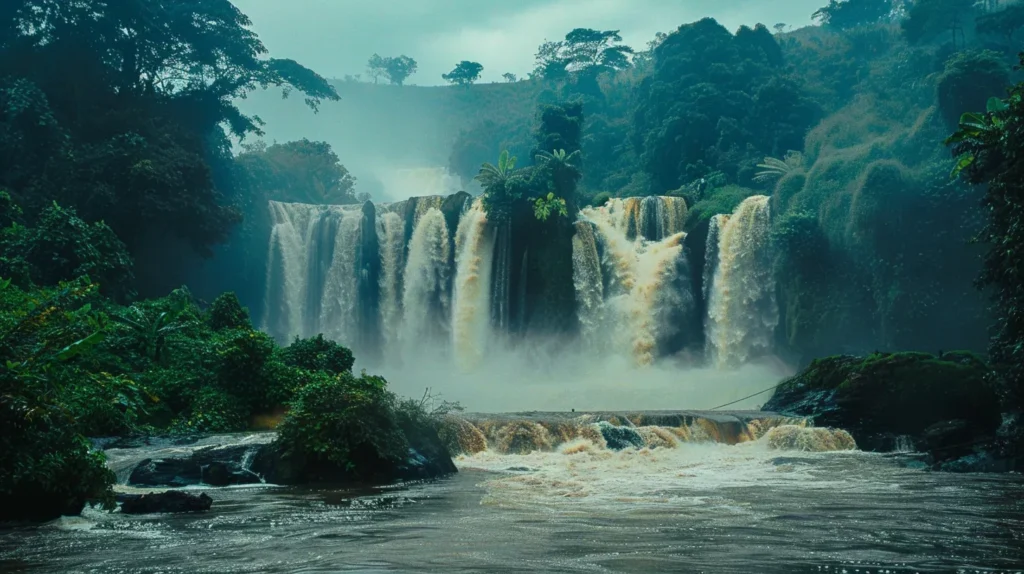
This cascade is also among the biggest waterfalls in the world. It is formerly known as Stanley Falls, in honor of the famous explorer of the region. The spot is situated between the two port towns – Ubundu and Kisangani in the Orientale Province of the Democratic Republic of the Congo. The natural marvel represents a series of seven cataracts that expand for more than 60 miles! Each cataract, however, doesn’t extend for more than 15 feet high.
These seven cataracts form the largest waterfall by the annual volume of flow rate on the Earth. The interesting fact is that two of these cataracts are hardly accessible because of the fast and dangerous streams.
Core features:
- Location: the Democratic Republic of the Congo
- Height: 200 feet
- Flow rate: 600,000 cubic feet/second
Sutherland Falls
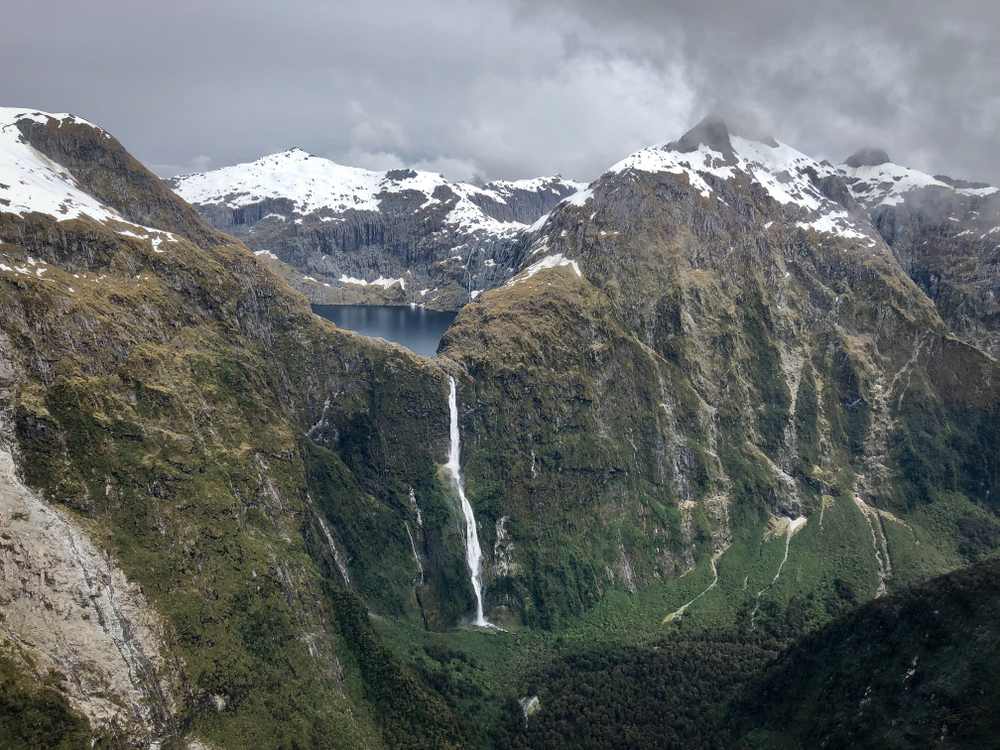
Sutherland Falls appears among the biggest waterfalls in the world as well. It is located in the south of New Zealand and was named after a man who discovered it at the end of the 19th century – Donald Sutherland. The first impressive fact about this natural marvel is that it was shaped over millennia. It starts from Lake Quill, located in the rock basin that appeared during the Ice Age. The water beautifully cascades from the impressive height of around 1,900 feet into a valley by falling almost vertically.
This natural miracle is not suitable for power generation. However, it is perfect for tourism. Even if the waterfall doesn’t have a powerful stream, its beauty is impressive. The route to a waterfall offers adventurers panoramic views of the untouched and amazing landscapes of New Zealand. The best time to visit this spot is between November and April since the skies are clear and the volume of the water falling is the largest.
Core features:
- Location: New Zealand
- Height: 1,900 feet
- Flow rate: 400 cubic feet/second
Kunchikal Falls
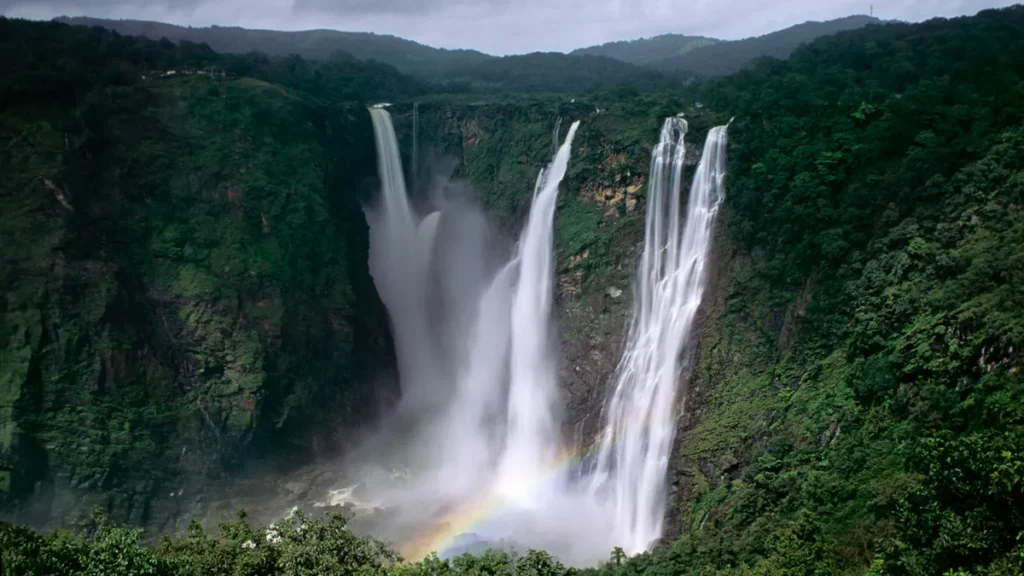
This waterfall can be found among many similar natural miracles in the Shimoga district of Karnataka, India. However, the Kunchikal Falls is the largest one in the entire India and among the hugest ones on Earth!
The waterfall offers breathtaking views when the Varahi River drops into the reservoir of the Mani Dam. The latter is used for hydroelectric facilities yet the water flows are reduced in this area, making them much safer. The tourists are not allowed to go to the part that is close to the Mani Dam because of the safety concerns. However, there are many other amazing spots nearby offering spectacular views. The perfect time to go to this marvelous location is from July to September.
Core features:
- Location: India
- Height: 1,500 feet
- Flow rate: 5,300 cubic feet/second
Top 5 Tallest Waterfalls in the World
While considering tall waterfalls, it is possible to elaborate on a separate list of top destinations. You may be already wondering what is the name of the highest waterfall in the world? Next, you will find the spots that are impressive because of their height and the tallest one right now.
Angel Falls
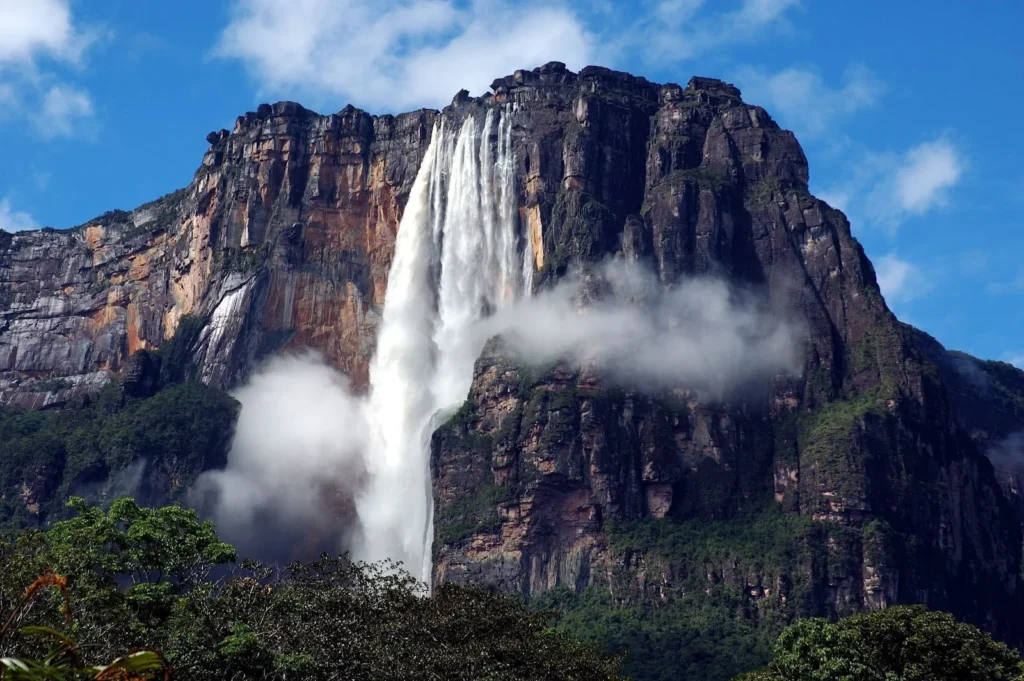
There is no need to say how gorgeous this natural marvel is since its height is around 3,200 feet! The Churún River drops from the “Devils Mountain”, a flat-topped plateau called Auyán-Tepuí. This amazing spot is located in Canaima National Park, Venezuela. It will be hard to reach it by land because of the dense jungles surrounding this cascade. Instead, the best solution is to look at it from the air. In any case, this spot is very noticeable from a distance, allowing visitors to take splendid pictures.
By the way, the waterfall got its name after James Angel, a famous American adventurer who explored this place in the 1930s. However, in 2009, Venezuelan President Hugo Chávez stated that the Angel Falls has to get its indigenous name back – Kerepakupai Merú.
Core features:
- Location: Venezuela
- Height: 3,200 feet
- Flow rate: 500 cubic feet/second
Tugela Falls
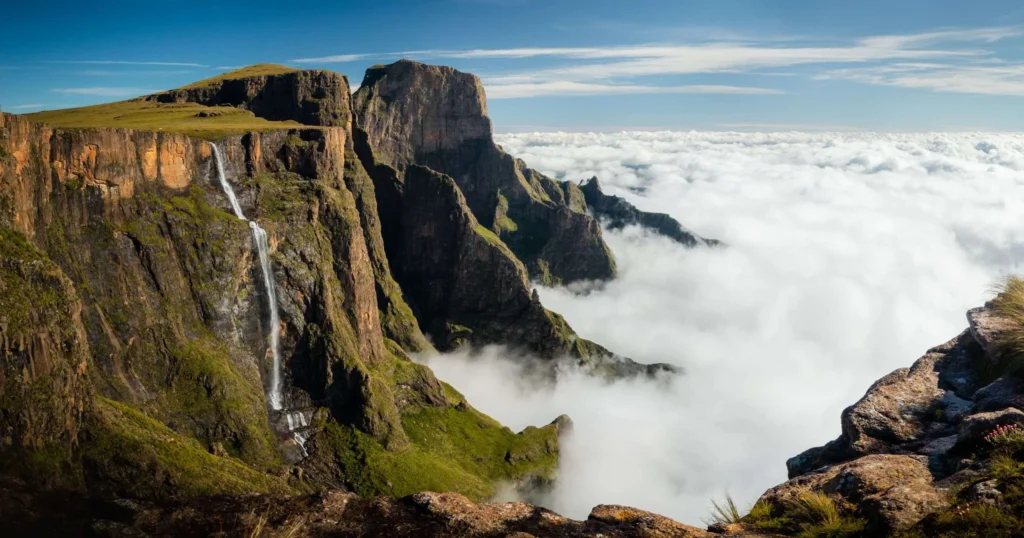
This marvel is located in the Drakensberg Mountains, South Africa, where rocks allow the waterfall to be the second highest in the world – rising up to 3,100 feet. The Tugela River falls from this height offering spectacular views to enjoy. Its cascades sharply fall in the part attributed to the Royal Natal National Park. In this place, the Tugela River showcases the power of nature. By the way, this name originates from the local word “thukela” meaning “startling” or “sudden.” The interesting fact about this waterfall is that it is capable of flowing consistently throughout the entire year.
Core features:
- Location: South Africa
- Height: 3,100 feet
- Flow rate: 40 cubic feet/second
San Rafael Falls
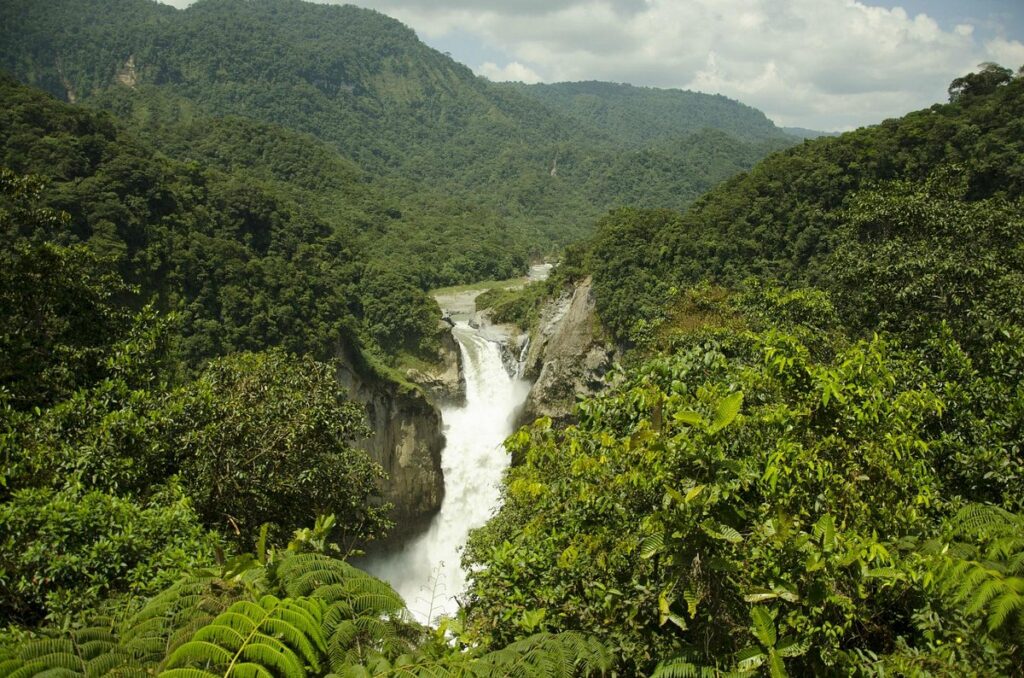
This is the highest waterfall in Ecuador, located on the Coca River. It is also the most powerful and the highest waterfall in this country as well. This natural marvel is located in the Cayambe Coca National Park and is a very popular local attraction for tourists. There is no need to say how spectacular the view is since the water falls from the layer of the hard volcanic rock that was actually formed thousands of years ago! Even more – it is situated at the foot of the Reventador volcano, which is active even nowadays. However, this waterfall is gradually disappearing due to natural processes. So, if you would like to go here, do not delay your plans.
Core features:
- Location: Ecuador
- Height: 430 feet
- Flow rate: 10,000 cubic feet/second
Olo’upena Falls
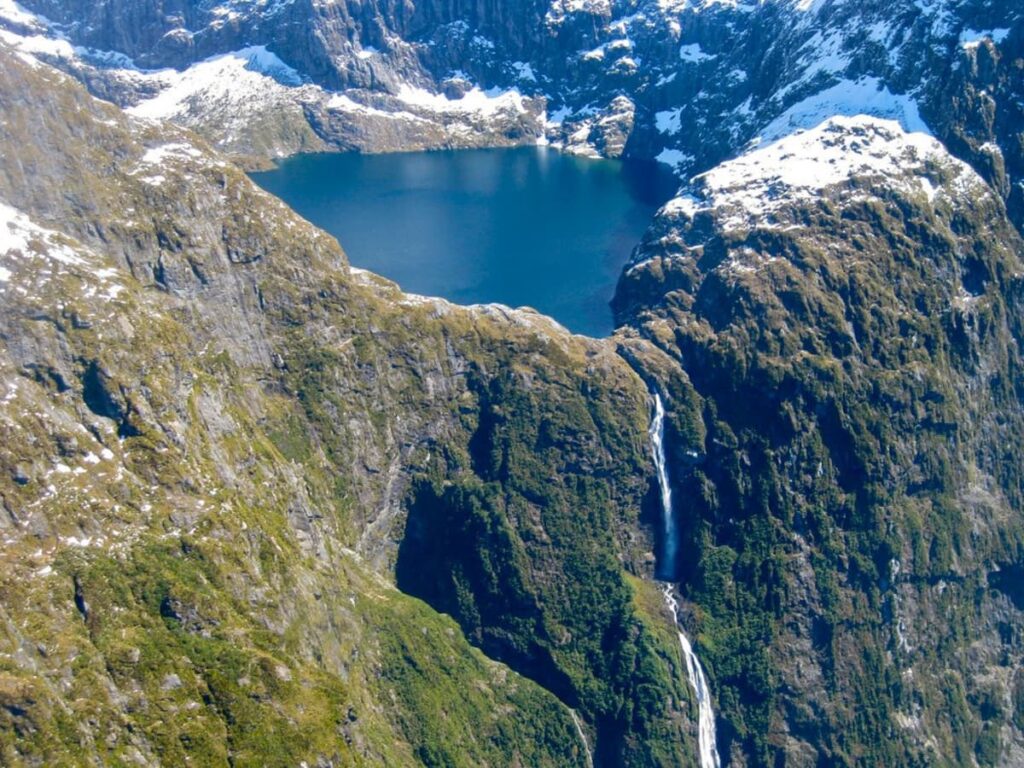
This amazing waterfall is located in the north-eastern part of the Hawaii State and is surrounded by the amazing lush green landscapes. It is considered to be the fourth-highest cascade on Earth and the tallest in the United States.
This natural marvel appears when the seasonal, short streams drop from the edge of one of the highest sea-side cliffs situated between the Wailau and Pelekunu valleys. Even if it doesn’t have any high flow rate, it is still beloved by many tourists who come here from the whole world. It is best to admire it from a small jet or helicopter.
Core features:
- Location: USA
- Height: 2,950 feet
- Flow rate: 35 cubic feet/second
Cataratas las Tres Hermanas
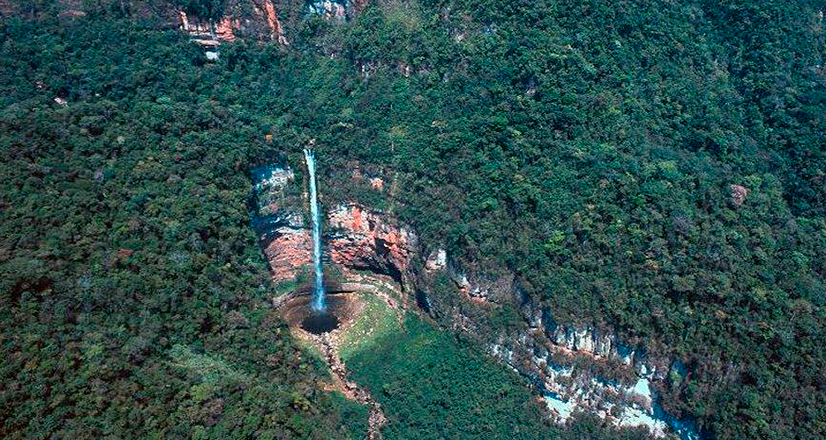
This is the last highest waterfall in the world to mention in our list. It is located in Peru. This name is indigenous and can be translated as “The Three Sisters Waterfall”. This name was given for a reason – the whole waterflow splits into three cascades which are surrounded by the green mountain forests. This spot is situated inside of the Otishi National Park.
Unfortunately, the spectacular place is very difficult to reach on foot. The adventurous souls opt for a small jet or helicopter instead. It should be noted that the access may be restricted, requiring periodically getting a special permit from the National Service of Natural Areas Protected by the State.
Core features:
- Location: Peru
- Height: 3,000 feet
- Flow rate: 40 cubic feet/second
Top 5 Largest Waterfalls by Volume

We have occasionally mentioned in the previous lists the waterfalls that have heavy flow rates. It is probably worth to shortlist 5 largest waterfalls in the world by volume too.
Inga Falls
This is the world’s largest waterfall by its flow scale. It is very wide, as for the waterfall, which is more than 1.5 miles. Its flow rate is estimated to be between 900,000 and 1,500,000 cubic feet/second! These indicators make the place perfect for power generation. Actually, the local streams are so heavy that the hydroelectric power plants cover only 30% of the water flow. That looks impressive. However, this place is not easy to reach because of safety restrictions. The best option is to observe it from a small jet or helicopter.
Livingstone Falls
This is another powerful waterfall. Its capacity is also estimated between 900,000 to 1,500,000 cubic feet/second! The Congo River where the cascades are located has the second-largest flow in the world without any falls and rapids.
The superior water flows of the Congo River make this spot attractive for many adventurous souls. They come here for water rafting, canoeing, and kayaking. The water rapids that are graded from 3 to 5, allow them to explore how powerful nature is in full. However, this endeavor may be dangerous.
Boyoma Falls
This is the third one in the list of largest waterfalls in the world. The power of its stream is estimated at the level of 600,000 cubic feet/second. This waterfall is also located on the Congo River that even splits into multiple channels in this spot. What is notable is that the Boyoma Falls comprises seven impressive cataracts. They expand for more than 60 miles! The currents are very turbulent at this location making them 100% non-feasible for swimming or extreme sports. These cascades have a huge potential for power generation.
Victoria Falls
What is the highest waterfall in the world that comes to your mind? That may be the Victoria Falls. This is a common misbelief. In reality, this water body is not the highest, but it is among the largest sources by the volume of water. It is widely known because it was named after Queen Victoria. It has another distinct name – “Mosi-oa-Tunya” which is translated as “The smoke that thunders.” This waterfall has a long history that begins more than 300 million years ago!
The renowned waterfall is located on the Zambezi River on the border between Zimbabwe and Zambia. The flow rate of the Victoria Falls is estimated at the level of exceeding 35,000 cubic feet/second. This waterfall is actually hugest single sheet of dropping water in the world. It falls from a height of 350 feet but is very wide – more than 5,600 feet! That is the reason why this waterfall was named as the most beautiful one in the world by the UNESCO.
Iguazu Falls
This is another spectacular cascade that is among the largest waterfalls in the world. It is shared by three states – Brazil, Argentina and Paraguay. The power of the flow that the Iguazu Falls has exceeds 62,000 feet per second! Its speed 30 times exceeds the usual water flow in the typical river! This waterfall is fed by two rivers simultaneously – the Parana and Iguazu Rivers. Even if it is not high, only 269 feet tall, the total number of drops it has is 275! The perfect place to take pictures is from the Garganta del Diablo, which is located nearby. This name is translated as the “Devil’s Throat”. These spectacular places are situated within the Iguazu National Park.
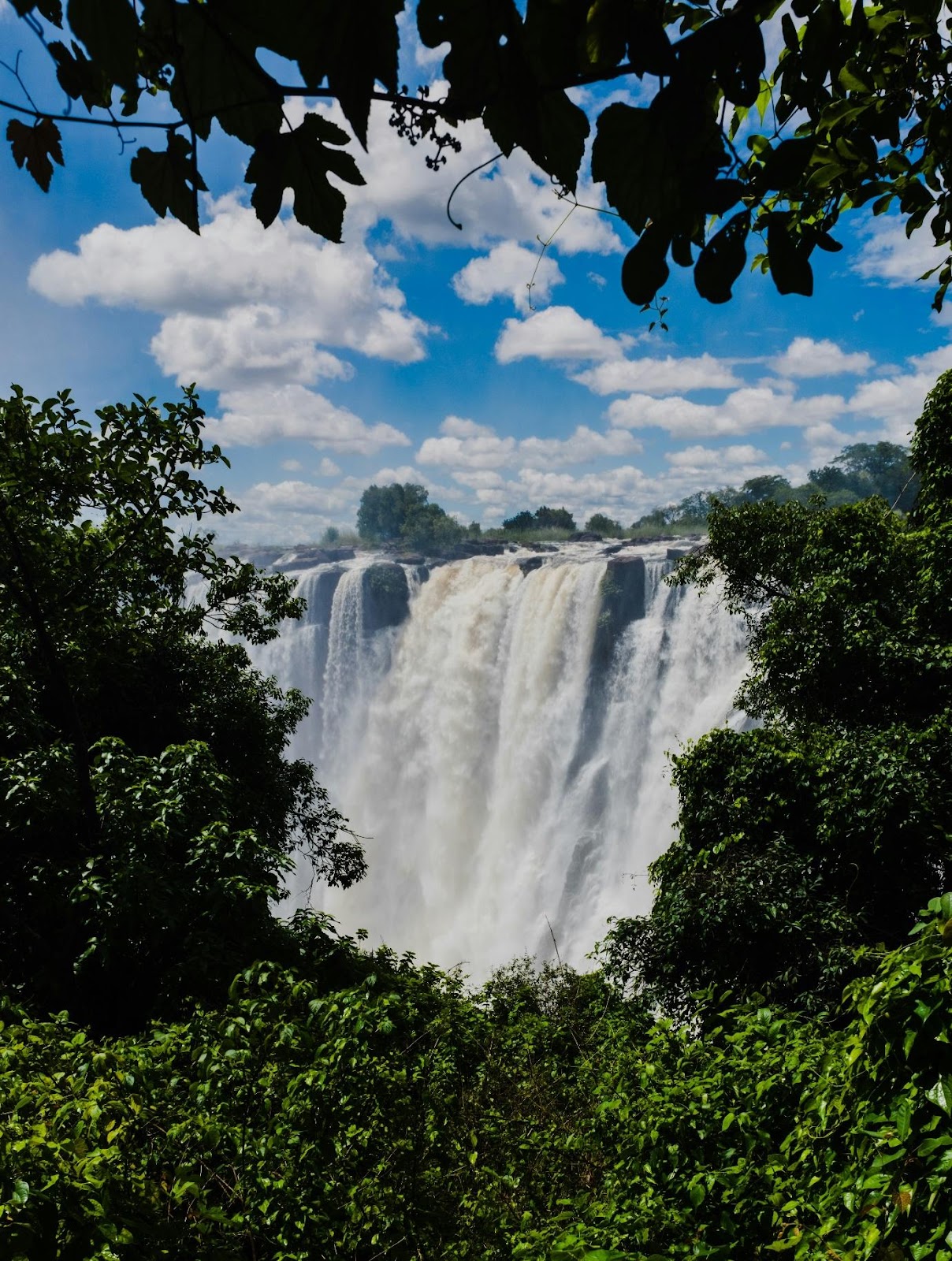
Comparison: Biggest, Tallest, and Largest Waterfalls
If we synthesize the information about all of the mentioned spectacular waterfalls, here is what we will get.
Biggest | Tallest | Largest(by volume) | |
| Angel Falls | + | ||
| Boyoma Falls | + | + | |
| Cataratas las Tres Hermanas | + | ||
| Iguazu Falls | + | ||
| Inga Falls | + | + | |
| Kunchikal Falls | + | ||
| Livingstone Falls | + | + | |
| Olo’upena Falls | + | ||
| San Rafael Falls | + | ||
| Sutherland Falls | + | ||
| Tugela Falls | + | ||
| Victoria Falls | + |
Key Differences and Similarities
Scientists split waterfalls by different categories – starting from the speed of the stream to the shape of the cascades. Speaking about the most prominent samples that we have mentioned in our review, they have several major features that are common and several ones that make them different.
The waterfalls we considered are similar because of the way in which they were formed. All of these sources of water drop from the height. Most of them also have quite powerful streams, while some of them have truly powerful ones. The size also has an impact on the flow rate, which is a bit less than such a parameter as the height.
These cascades are different because of the historical ways how they were formed. Each natural marvel had its own unique pass, counting for thousands and, in some cases, millions of years. All of these waterfalls are different in their shape because of the surfaces and surroundings as well.
Despite all of the differences that these sources of water have, they are all worthy of visiting. The biggest, tallest, or largest – whenever it is, it is impressive! Go to any of them and you will get 100% unforgettable memories and photos!
Our advice
Looking for budget-friendly flights? Trip.com has an exclusive deal just for you! Use 2QLFLYTRIP10 to save $10 on flight bookings over $250. With only 500 coupons, this offer is perfect for travelers from the US, UK, CA, and AU. Book by March 31, 2025, to secure your savings!



